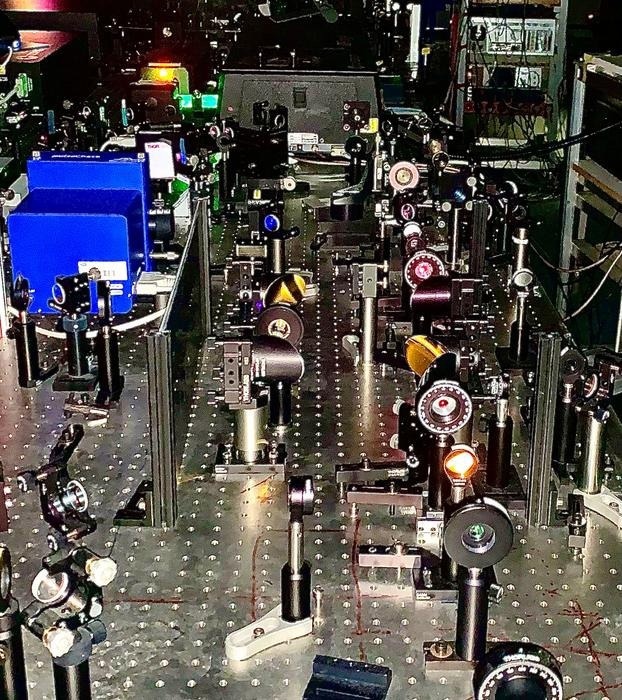Climate-neutral hydrogen will be a crucial fuel and raw resource in the future. Water is electrolyzed to produce hydrogen, either indirectly (using a solar panel or wind turbine to provide voltage to the electrolysis cell) or directly (using a photoelectrochemical cell, or PEC cell), where the photoelectrode itself provides the electrical energy for electrolysis. Although this direct strategy could have certain benefits, it is not yet cost-effective.
 In the femtosecond laboratory, all samples are investigated with both a terahertz method (OPTP) and microwave spectroscopy (TRMC), both measurement methods initially provide information on the mobility and lifetime of the charge carriers - but on different time scales. Image Credit: Markus Schleuning/HZB
In the femtosecond laboratory, all samples are investigated with both a terahertz method (OPTP) and microwave spectroscopy (TRMC), both measurement methods initially provide information on the mobility and lifetime of the charge carriers - but on different time scales. Image Credit: Markus Schleuning/HZB
So far, the main cause of this is a dearth of high-quality photoelectrodes. In theory, metal oxides are thought to be a good choice since they are affordable, non-toxic, stable in aqueous solution, and frequently have catalytic qualities that can quicken the desired chemical reaction.
Additionally, sunlight causes the discharge of charge carriers from metal oxides, producing an electrical voltage. However, these charge carriers are not as mobile, rather slow, or immediately return to the lattice and localize when compared to doped semiconductors like silicon. This is caused by a variety of still poorly understood mechanisms operating on diverse time and length scales.
The group led by Dr. Dennis Friedrich and Dr. Hannes Hempel has now thoroughly examined for the first time what restricts the conductivity of metal oxides in the femtosecond laser lab at HZB.
We wanted to find out how strongly charge carriers are localized and how this reduces their mobility at different times.
Markus Schleuning, Study First Author and Postdoctoral Researcher, Helmholtz-Zentrum Berlin
Dr. Hempel stated, “First, we developed a new method to determine the diffusion lengths. The simple equation can also be applied to other classes of materials such as halide perovskites or silicon.”
“Then we found out that this does not work for certain materials, and precisely when the charge carriers are located,” Friedrich added.
All materials are examined in the femtosecond lab using the terahertz method (OPTP) and microwave spectroscopy (TRMC). These two measuring techniques initially reveal details on the mobility and lifespan of the charge carriers, however, on distinct time scales. The outcomes can vary greatly, proving that the carriers have since become localized.
The team was able to ascertain the dynamics of charge carriers in the materials, from quick processes lasting 100 femtoseconds to slower ones lasting 100 microseconds. This would correspond to variations in time spans ranging from 1 second to 31 years, extrapolated to the human perception of time.
The physicists examined ten metal oxide compounds, including Fe2O3, CuFeO2, -SnWO4, BaSnO3, and CuBi2O4, using this combination of techniques. All materials had very low mobilities as compared to traditional semiconductors. The annealing process considerably increased the mobility of BaSnO3.
The well-known bismuth vanadate (BiVO4), which exhibits negligible carrier localization on the length scales examined, performed the best. The work demonstrates how metal oxide compounds can be characterized to find and create the best photoelectrode materials.
Journal Reference:
Schleuning, M., et al. (2023) Carrier Localization on the Nanometer-Scale limits Transport in Metal Oxide Photoabsorbers. Advanced Functional Materials. doi:10.1002/adfm.202300065.